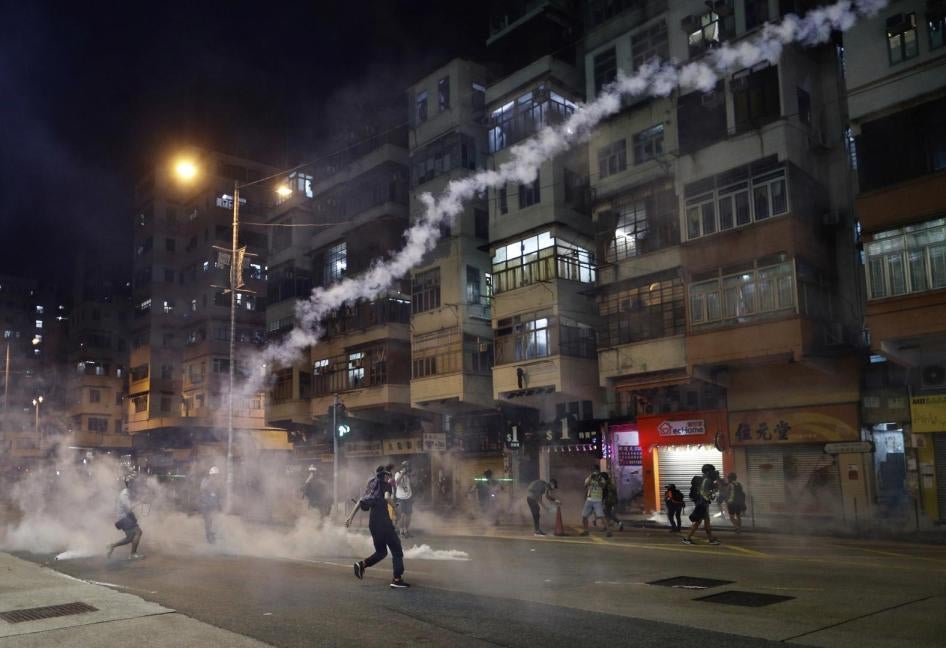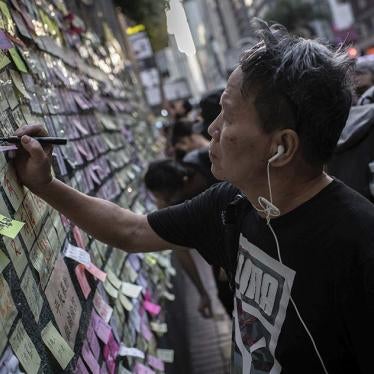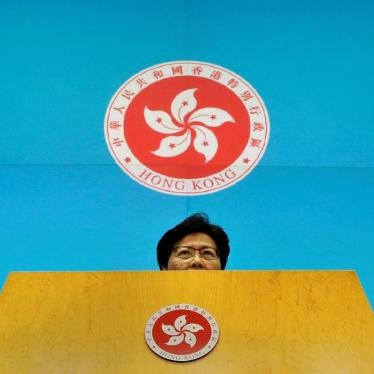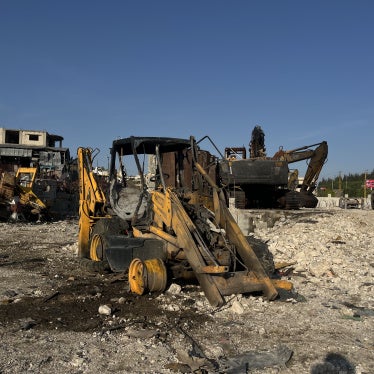(New York) – The Hong Kong police should stop using excessive force against pro-democracy protesters in the city and abide by international standards governing the policing of assemblies, Human Rights Watch said today. Authorities should also allow an effective, independent investigation into the policing of protests.
“Police in Hong Kong have been equipped and trained to comply with international standards on the use of force,” said Sophie Richardson, China director at Human Rights Watch. “But they are now turning their backs on that, and instead are escalating the use of force.”
On August 11, 2019, as the mass demonstrations calling for democracy and complete withdrawal of the extradition bill entered their 10th week, Hong Kong police intensified its crackdown on protesters. Instances of excessive and questionable use of police force have been reported by the media or video recorded by protesters. They include:
- In Kwai Fong, police fired teargas inside an enclosed subway station in an attempt to force out protesters;
- In Tsim Sha Tsui, a police officer reportedly fired a bean bag round into a woman’s face, causing heavy bleeding from her right eye;
- In Tai Koo, a police officer was video recorded shooting pepper balls at close range at protesters as they were leaving the protest scene through the subway station; and
- In Causeway Bay, a police officer knelt on the face of a protester, pressing his face into a pool of his own blood.
The right to peaceful assembly and protest is a fundamental right protected under international law, and one of the cornerstones of a society built on respect for human rights and rule of law. International human rights standards provide that law enforcement agencies should protect and facilitate that right, and in principle should not use force to disperse nonviolent assemblies. Where that is not practicable, international law requires them to “restrict such force to the minimum extent necessary.”
On the night of August 13, the peaceful sit-in that started at the Hong Kong International Airport turned violent, with police clashing with protestors. Some demonstrators seized and beat two men they suspected of being pro-Beijing infiltrators.
While some Hong Kong protester action may have warranted the use of force by the police, under the United Nations Basic Principles on the Use of Force and Firearms, police should limit its use to ways that minimize the risk of injuries and protect the right to life and health.
In dispersing peaceful assemblies that are deemed unlawful under applicable laws, law enforcement officials should make repeated efforts to communicate to protesters that they are required to disperse voluntarily and grant them sufficient time to do so. If other means of de-escalation prove ineffective or show no promise of achieving the intended result, then law enforcement officials may use force strictly proportionate to the danger to public order posed by protesters and to the legitimate objective to be achieved.
The use of “less-lethal” weapons in the context of controlling or dispersing unlawful assemblies is allowed by the Basic Principles but must be done in ways that comply with international norms and standards. Less-lethal weapons include tear gas, pepper spray, and bean bag rounds. Images of this weekend’s incidents show several instances in which the Hong Kong police did exactly the opposite, using “less-lethal” weapons and brute force in ways that endangered the lives and health of protesters.
Some members of the Hong Kong public have also expressed concern with what they say is the authorities’ inadequate response to mob violence against demonstrators. In North Point, dozens of men wearing red T-shirts heckled and attacked protesters, reporters, and first aid providers. There have also been allegations that police officers posed as protesters.
In the past two and half months, over 600 protesters have been arrested. The protesters made five demands to Chief Executive Carrie Lam, including the complete withdrawal of the anti-extradition bill, a full independent inquiry into the actions of the police, and the release of those arrested. Instead of addressing any of the demands, Lam at a press conference on August 13 accused protesters of “destroying the rule of law.”
An official in Beijing, in an August 12 news conference, condemned protesters’ actions as showing “signs of terrorism,” escalating the Chinese government’s rhetoric against the protests. Chinese authorities have been using the vague and broadly defined charges of “terrorism” to justify its repressive measures, including in the northwest region of Xinjiang.
Human Rights Watch has repeatedly called on Hong Kong authorities not to use excessive or unlawful force to suppress peaceful protests. On June 28, in a letter to Chief Executive Carrie Lam, Human Rights Watch called for Hong Kong authorities to establish an independent commission to investigate alleged excessive use of force by police on June 12.
Hong Kong authorities so far have rejected such calls and repeatedly contended that existing police complaint mechanisms are adequate in dealing with allegations of police abuse. However, the police internal review board, Complaints Against Police Office (CAPO), and its oversight body, the Independent Police Complaints Council (IPCC), have long been criticized for being ineffective in holding officers accused of misconduct to account.
In the past three months, Hong Kong police granted permission for some demonstrations but not others. According to Hong Kong’s Public Order Ordinance, organizers must notify police of demonstrations involving more than 30 people seven days in advance, and get a “notice of no objection” from the government before proceeding. This requirement raises problems under international law. The UN Human Rights Committee, the body that monitors compliance with the International Covenant on Civil and Political Rights (ICCPR), which was incorporated into Hong Kong’s legal framework via its Basic Law, has repeatedly expressed concerns that the ordinance “may facilitate excessive restriction” on the right to freedom of assembly.
“Public anger is justifiably growing as people witness increased police violence,” Richardson said. “In the coming days, police need to abide by international standards, and authorities need to launch credible, effective investigations into the police’s behavior.”







